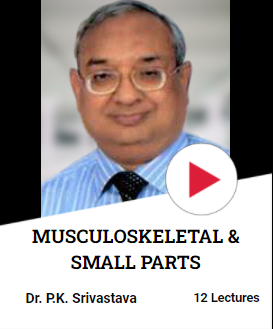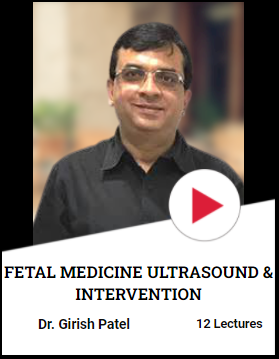Acute scrotum pain can be due to diverse causes. The most important objective of management of these patients is to rule in or rule out testicular torsion. It requires immediate intervention in order to avoid infarction of the affected testis. On the other hand, if torsion can be confidently ruled out, unnecessary surgical intervention can be avoided. Intermittent Testicular Torsion (ITT) or torsion detorsion sequence is a clinical syndrome defined by a history of unilateral scrotal pain of sudden onset and of short duration that resolves spontaneously. The natural history of ITT varies. Some of them may present with acute torsion at a later date. This is evidenced by the observation of up to a half of patients presenting with acute torsion report previous episodes of testicular pain. In the current series, the incidence of the previous episodes is 40%. Some of them have continued attacks, which, if lasting enough can result in ischemic damage to the testis, although definite evidence of this is lacking.
Currently, an ultrasonographic study of the acute scrotum is focused on the evaluation of the testis, the epididymis, and the scrotal wall on the grayscale sonography and the study of the intratesticular vascular flow by color doppler. However, there are situations that may show inconclusive results on the color doppler study. Torsion detorsion phenomenon may present testicular hyperemia mimicking an inflammatory process. There are reports of spermatic cord torsion with preserved testis perfusion on a color doppler study. All these pitfalls occur because they indirectly evaluate a pathology that is caused elsewhere and it is proposed to study the spermatic cord directly since actual torsion occurs there. Baud et al and Kalfa et al have studied the spermatic cord in its entire length including the inguinal canal and described a spiral twist of the cord at the external inguinal ring diagnostic of torsion, irrespective of the color Doppler findings in the testis. They have described the high sensitivity and specificity of this sign. The rate of unnecessary surgery was 0%. The same sign is elicited with a real-time modification in the form of the downward movement of the transducer along the spermatic cord to look for the whirlpool sign. The mass of torsion of the cord presented an appearance a doughnut, target, snail shell or storm on a weather map. The movement of the transducer in a downward direction perpendicular to axis of this mass brought on the whirlpool sign. The mass of whirlpool is seen in various locations – just distal to the external ring,
above the testis or posterior to the testis and in inguinal canal if the testis is undescended. The angle at which it is best seen also varies. In complete
torsion the whirlpool sign is seen only on grayscale with absent intratesticular flow on color doppler imaging. In incomplete torsion there is flow in the vessels of mass of whirlpool, distal to it and in the testis. The whirlpool sign is seen in grayscale as well as color doppler imaging. The incomplete torsion probably explains the cases reported in earlier reports as missed torsion or torsion with preserved testicular perfusion and the whirlpool sign helps in diagnosis of torsion in such patients. Hence, the real- time whirlpool sign is the most definitive sign of torsion since it has 100%
specificity and sensitivity, as there are no false positive or false negative cases of torsion. The second group of patients has a straight spermatic cord, swollen testis and/or epididymis, absent focal changes in the testis, and unequivocal increased flow in testis and epididymis. Sometimes the flow may be increased in
epididymis along with the normal flow in testis. These features may be seen in either of the two conditions of acute epi-didymo orchitis or ITT and the
differentiation is based on the presence or absence of clinical/laboratory evidence of infection. Patients with acute epi-didymo orchitis have some
clinical features suggestive of epi-didymo orchitides like fever, dysuria, or laboratory evidence of leukocytosis or urinary infection. The patients with ITT lack these clinical features of epi-didymo orchitis and instead, they may give a typical history of acute pain of short duration with spontaneous relief, which is usually associated with vomiting. The axis of the testis is horizontal. We had 1 patient with this diagnosis. The finding of epididymal and/or testicular hyperemia in ITT is indicative of reactive hyperemia and is seen in 17% of the patients with ITT. A consistent sonographic sign described in ITT is the horizontal lie of the testis.
In some patients, who reveal straight spermatic cord and hyperemia, a diagnosis cannot be offered since there is a lack of any differentiating clinical/laboratory features. The observation of the horizontal testicular axis may be a useful sonographic sign in such patients.
The fourth group shows straight spermatic cord, horizontally oriented testis, swollen testis and epididymis, focal changes in the testis, and increased flow in
spermatic cord and epididymis with decreased or increased flow in testis.
The focal hypoechoic areas in the testis lack blood flow on color doppler imaging. The possible diagnoses in them are segmental infarction (due to ITT or vasculitis) and epi-didymo orchitis with suppuration of the testis. The differentiation is by the clinical/laboratory evidence of infection for testicular abscess and the lack of them with horizontal axis of the testis for the ITT.
The sonographic features of ITT will depend on the interval of time between sonography and the event, severity of the torsion, and duration of the event.
If the patient reports after a few days of a mild event the sonography may be normal. If he presents within a few hours after a severe torsion and
complete detorsion, the testis is slightly swollen and hypoechoic and the spermatic cord is straight. There is hyperemia of the testis on color doppler.
The same features are also seen in acute epi-didymo orchitis. The differentiation of ITT and epi-didymo orchitis in this situation is only clinical.
One useful and consistent sonographic finding in ITT is a horizontal lie of the testis. Some of these patients of torsion detorsion sequence showing
testicular hyperemia and mimicking epididymoorchitis develop testicular atrophy later, which is well documented.
The third group of patients with ITT, who have a severe torsion with complete detorsion and report early, reveal sonographic features of segmental testicular infarction. The horizontally placed testis reveals focal hypoechoic areas that lack blood flow, with the rest of the testis showing normal echo pattern. These areas of normal echo pattern either show normal blood flow in sparse arteries or show hyperemia. The epididymis may show increased blood flow. Although polycythaemia, sickle cell anemia, acute angitis have been linked to segmental infarction, the cause of most reported cases is unknown and probably these were in fact cases of ITT. Differential diagnosis of this presentation can be severe orchitis with suppuration. The differentiation of these two conditions is by the clinical features of infection seen in epididymoorchitis and the history of acute pain with spontaneous relief, a history of a previous episode and a horizontal testicular axis in ITT.
In conclusion, testicular torsion is a complex condition with a spectrum of clinical and sonographic features. In complete torsion there is a whirlpool sign
on gray scale imaging and absence of flow in the distal cord, testis and epididymis. In incomplete torsion there is whirlpool sign on gray scale and colour doppler sonography and varying amount of vessels within the testis. The sonographic real-time whirlpool sign is the most specific sign of torsion, either complete or incomplete, as it reveals the actual pathology. Alternatively the torsion may present a challenging spectrum of clinical features that may be due to ITT. The symptoms are acute onset of severe scrotal pain with spontaneous relief after a short time. The sonographic spectrum of this condition varies depending on the severity and duration of the event and the time interval between the event and the sonography. There may be features of segmental testicular infarction, testicular hyperemia or a normal testis.












